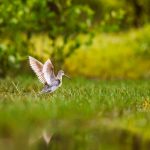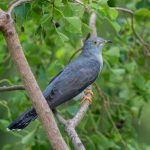Wind farms are an emotive and divisive issue, especially amongst birders. A badly sited wind farm can lead to devastating consequences as we know only too well for many large birds, particularly raptors.
In the UK the visual intrusion caused by the huge turbines is a hot topic with many believing they are ruining the beauty of our wild landscapes and natural heritage. The irony that wind allegedly produces ‘green’ or renewable energy isn’t lost on those that protest against the hundreds of planning applications that are lodged annually for new wind farms.
On 17 May a small group of protesters are planning a peaceful protest march in Scotland at the site for one such new wind farm, Dunmaglass in the Monadhliath Mountains. This ‘Wake for the Wild’ will involve carrying a coffin; a symbol of the death of Scotland’s Wild Places up to the point of the highest turbine, about 2,500 feet up in the beautiful, wild Monadhliath Mountains.
The group plans to say a few words over the coffin in memory of the once wild and beautiful landscape they believe is about to be destroyed following the granting of planning approval . Dunmaglass is an area close to locations known to be frequented by Golden Eagles.












So then, what is the solution? Fossil fuels will surely spell the death of wild places too, albeit in a slower and more insidious manner. Is there any evidence that birds and bats can learn to avoid the turbines? Any methods to scare animals away from them?
No evidence so far Sherrie (at least none that I’m aware of) that birds have modified their behaviour. Laura Kammermeier blogged about some kind of scaring adaptations a while back on wind turbines in the US but I’m not sure whether these are in widespread use.
My personal opinion is that wind turbines are fine in the right locations, shove them onto big industrial parks where they aren’t going to blight the little wild areas we have left, just don’t sitre them where they are in the regular flight-paths of species susceptible to collision.